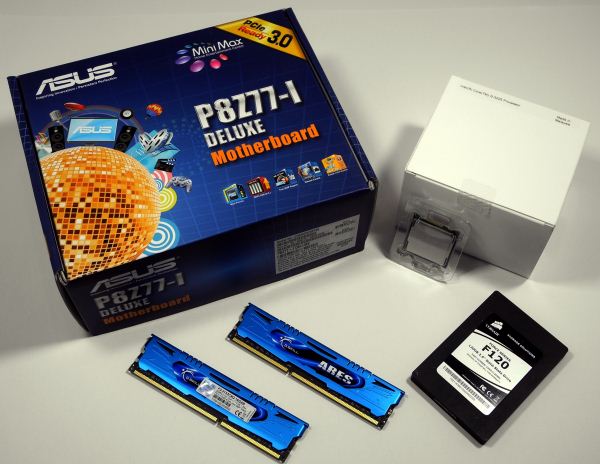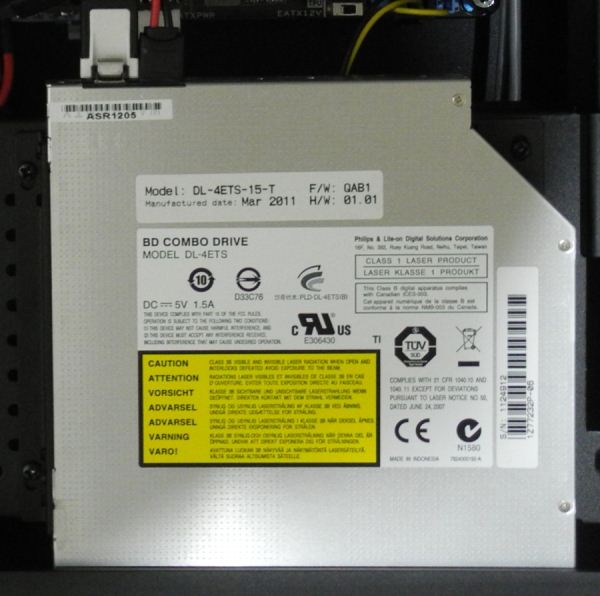Streacom's FC10 and Nano150: Building a Fanless Ivy Bridge HTPC
by Ganesh T S on December 22, 2012 3:30 AM EST- Posted in
- HTPC
- Fanless
- Ivy Bridge
HTPC Testbed Components
In choosing the Streacom FC10 and Nano150 as the chassis and PSU for our testbed, we were practically restricted to a mITX or uATX motherboard. There was a toss up between building a Trinity-based testbed and a Ivy Bridge-based testbed. In the end, the fact that Trinity emerged as being a capable madVR candidate (with software based decoding), and the fact that madVR recently introduced DXVA scaling (an upside for Intel since its offerings weren't fully madVR capable earlier, and something that we wanted to test out) persuaded us to go for an Intel-based testbed.
Processor:
Intel's best GPU offering to date is the HD 4000, and the cheapest Ivy Bridge with the HD 4000 GPU is the Core i3-3225. The Core i3-3225 is a 2C/4T processor with a 55W TDP. It has a 3 MB L3 cache, and can run at 3.3 GHz. The HD4000 runs at 650 MHz by default, but, can turbo up to 1050 MHz when necessary. Like all other Ivy Bridge processors, we have support for DDR3-1600 memory.
Motherboard & Chipset:
The Asus P8Z77-I Deluxe is a Z77-based mITX motherboard with integrated dual-band Wi-Fi / Bluetooth and plenty of HTPC oriented features with Wi-Fi GO!, including the ability to interact with the PC using a mobile device, making it act as a DLNA media hub and so on. This video from Asus captures the capabilities included in the Wi-Fi GO! feature. Ian will be presenting a detailed review of the P8Z77-I Deluxe. However, in the context of our HTPC testbed, the motherboard fulfills all our primary requirement that at least one free PCIe slot be available for installation of a discrete GPU at a later point in time.
Asus also has a Wi-Di enabled model with an Intel Wi-Fi adapter instead of the Broadcom-based one in the P8Z77-I Deluxe.
Memory:
We had used the G.Skill Ares kit in our Trinity HTPC testbed, and given the fact that it can run even at 2133 MHz, we decided to use the same model for this system build also. As a refresher, the DRAM runs with a 9-11-10-28 latency configuration. We also decided to use only one module to give the system 4 GB of DRAM. The reason to not go in for 8 GB will be made clear in the next section.
Primary & Optical Disk Drives:
We used one of the old SSDs lying around, the Corsair F120 120GB. Our intent was to use the SSD only for the OS and program files, and leave all the media on a NAS in another location. Installing a hard drive for increased capacity was ruled out because we wanted a silent HTPC.
One of the constraints posed by the FC10 chassis was the fact that we could only use a slot-loading optical drive. Despite the fact that we wanted a silent system, we did make one concession and decided to install a ODD in the system. Some of our ASRock HTPC samples are now being used as headless systems for network testing, and we decided to take out a Blu-ray drive (Philips Lite-On DL-4ETS) from one of those and use it in our HTPC testbed.


















63 Comments
View All Comments
wsaenotsock - Saturday, December 22, 2012 - link
As much as I appreciate the whole full-silent chassis by Streacom here, and others such as Zalman- who made a high end one a few years back... I don't understand why there aren't more cases that are designed like this while also incorporating low-volume air cooling with a large sized, high quality fan, slightly undervolted. Widely tested & recommended fans (such as on the SPCR website) are barely detectable and add enough airflow to keep the temperatures manageable, so that you can actually use performance components, not just end up cornered into low wattage HTPC stuff, and still not worry about reducing lifespan of parts with heat.I want to see more cases that are intelligently designed instead of just fully passive or the opposite extreme with 5 - 8 120mm fan cutouts.
snuuggles - Saturday, December 22, 2012 - link
Took the words out of my mouth. I wonder if it's that HT stuff simply "should" be under a certain heat envelope so they play nice with all the other components they are stacked up with traditionally?I mean, there's a reason most stereo stuff doesn't come with a fan of any kind.
PS did you see the new type of "bellows" fan being developd
Menty - Saturday, December 22, 2012 - link
Absolutely. Fully passive cases just make too many compromises when one or two very very slow fans will make everything just that much happier.LauRoman - Saturday, December 22, 2012 - link
Problem is, very slow fans get dust clogged and louder as time goes on. On a machine that will barely be touched by fingers, let alone opened-up that's not a very good thing.Olaf van der Spek - Saturday, December 22, 2012 - link
Isn't that why dust filters were invented?EnzoFX - Saturday, December 22, 2012 - link
Still requires maintenance.Hrel - Sunday, December 23, 2012 - link
you sound like a horrible person. You can't be bothered to clean your PC once/year? Slob.Samus - Monday, December 24, 2012 - link
yep. coolest thing about passive cooling is you can open it up 3 years later and it still looks brand new inside without a spec of dust!mike8675309 - Thursday, December 27, 2012 - link
Someone hasn't opened up his T.V., or stereo, or cable box lately.kmmatney - Tuesday, January 22, 2013 - link
I bought my Kenwood receiver (still used with my TV) in 1989, and cleaned it out for the first time about 2 years ago. So yeah, you have to clean it out, but only every 20 years or so. That said, I'd prefer a slow moving fan in an HTPC case.